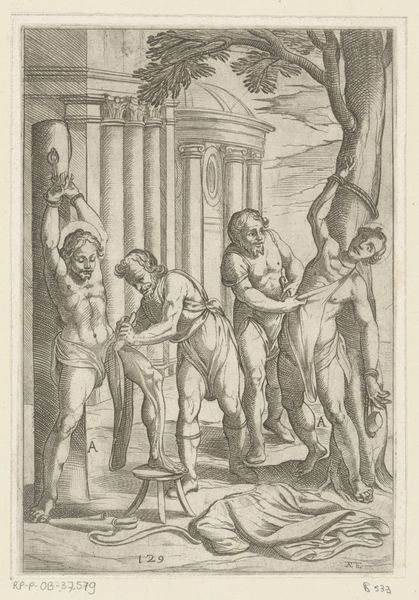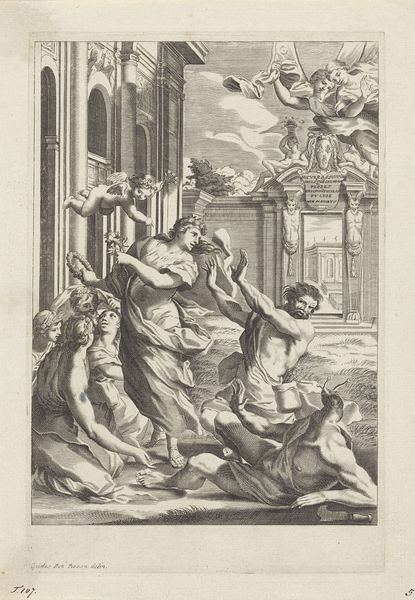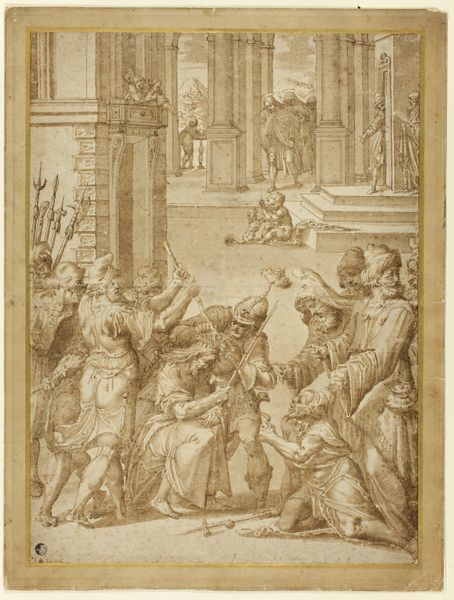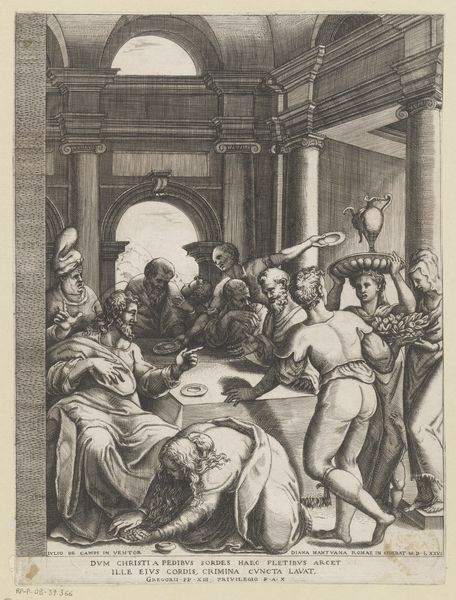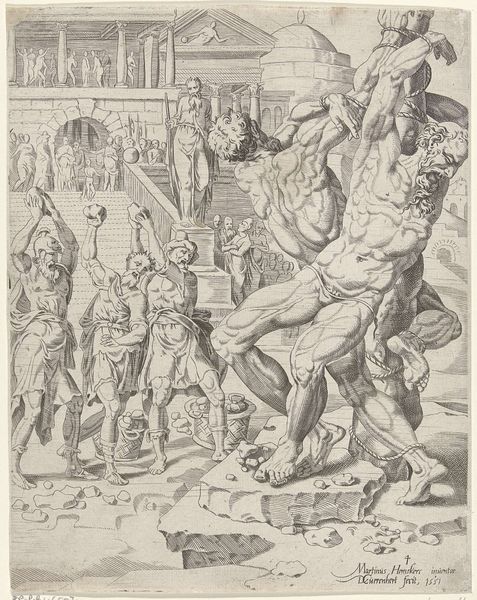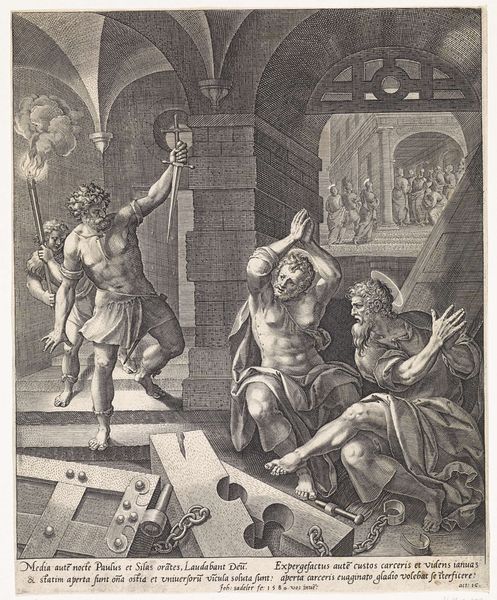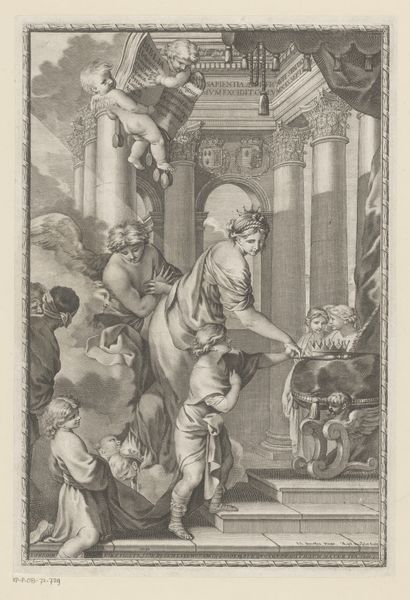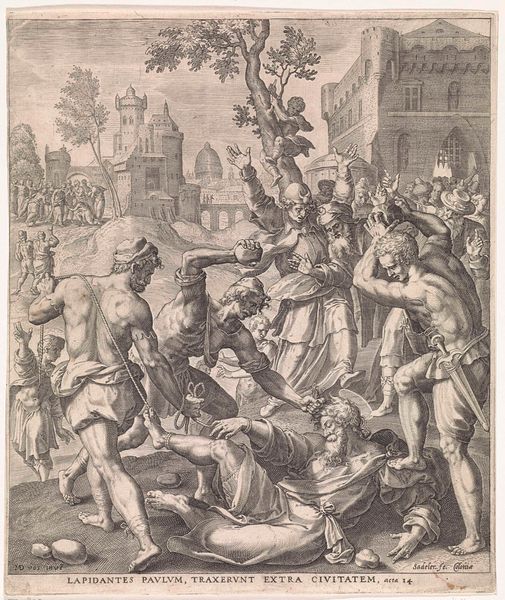
drawing, print, engraving
#
drawing
# print
#
mannerism
#
figuration
#
history-painting
#
italian-renaissance
#
engraving
Dimensions: Sheet: 16 5/16 × 11 1/4 in. (41.4 × 28.5 cm)
Copyright: Public Domain
Editor: Here we have "The Stoning of Saint Stephen," a 1575 engraving by Cherubino Alberti. The brutality is stark, isn't it? Stephen is kneeling, surrounded by men ready to throw stones, with an elaborate architectural background that almost seems to mock the violence. What aspects of the cultural context might be informing Alberti’s depiction here? Curator: It’s fascinating how Alberti places this gruesome scene within a classical framework. The Renaissance witnessed a surge in representing biblical narratives, often through the lens of humanist values. This engraving, while depicting a religious martyrdom, is deeply engaged in the visual language of power, drawing upon classical architecture and idealized human forms. We have to consider the role of the Church, which was undergoing significant challenges to its authority during this time. How does this image participate in shaping the narratives of faith and power in 16th-century Europe? Editor: So, the classical style adds weight, lending authority to the scene, yet the choice of such a violent subject might reflect the era’s religious tensions? Curator: Exactly. This print wouldn't exist in a vacuum; it was likely intended for circulation, shaping public opinion on matters of faith and religious persecution. Consider, too, how printmaking itself was a rapidly evolving technology, making art more accessible to a broader audience. Editor: That's something I hadn't fully appreciated – the way prints like this actively shaped beliefs. Now I am also thinking about accessibility. Curator: Moreover, the act of stoning is rarely seen depicted this way with perfect human figures, where beauty is shown beside such tragedy. Perhaps Alberti did that to have viewers wonder who was right and who was wrong, to shape public opinion as you mentioned before. What are your opinions on this theory? Editor: I think that sounds right because it certainly affected the way I felt when observing it now. Curator: Absolutely, this kind of perspective enriches how we observe art within time. Editor: Thanks. Considering the print’s availability during that era sheds a new light. I now understand better the political relevance of visual choices that impact its reception.
Comments
No comments
Be the first to comment and join the conversation on the ultimate creative platform.

